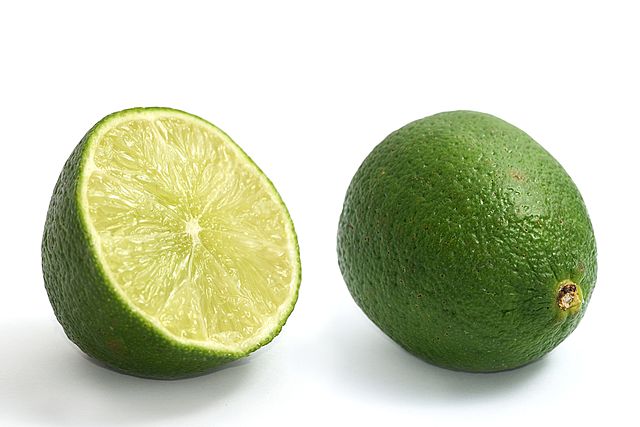Don’t Forget the Lime

It’s the early 1800s. You’re a British subject, sailing around the world, bouncing around the Empire. While your job has its perks — you get to see places that others can’t even dream of — it also has a few major downsides. As you spend weeks if not months at sea, your diet is limited to whatever can be preserved for the long haul. Pickled vegetables, salted meats, dried fruit, and potted fish make up the less-than-appetizing and generally unhealthful menus. This was more than just an inconvenience, too — it was a public health crisis. Half a century earlier, malnutrition claimed the lives of tens of thousands of British seamen serving in the Seven Years War. Many of these deaths were due to scurvy, a disease which begins with signs of extreme lethargy and bleeding gums, and often ends in high fevers, massive bruising, and ultimately, death. By one estimate, scurvy claimed the lives of as many as two million sailors from the 1500s into the 1800s.
What’s weird, though, is that civilization has known how to ward off scurvy for centuries if not millennia — just make sure you eat citrus. Unfortunately, history keeps forgetting to do that.
Most likely, the reason we kept forgetting is because we didn’t understand the disease’s root cause. There is evidence that the early Egyptians knew of the disease and potentially of its cure, and there are a half dozen examples during the period of Elizabethan naval exploration where scurvy was mostly avoided by the consumption of citrus. These people knew that limes, lemons, and oranges prevented the disease — they just didn’t know why. The lack of understanding as to its cause resulted in history screwing up — over and over again.
For example, in 1614, John Woodall, the Surgeon General of the East India Company suggested carrying citrus as part of sailors’ rations in order to prevent scurvy. This was correct, of course, and it saved a countless number of lives. Unfortunately, he made the suggestion because he believed that the body required something acidic — and citrus just happened to be an obvious source. If citrus weren’t available, he observed, food items containing sulfuric acid would make for an acceptable alternative. When this turned out to be wrong, people started to die. The usefulness of the generally expensive and hard-to-store citrus was also called into question, and ultimately, the fruit was once again left off the ships manifests.
Even when science finally determined that citrus was the required element — that was determined in one of the world’s first clinical trials in 1747 — the connection to “why” was left unanswered for two more centuries, leading to further errors. For example, in the 1860s, Parliament passed the Merchant Shipping Act, requiring ships to give sailors lemon or lime juice each day to help prevent scurvy. (The term “limey,” in the United States, is slang for “British person.” The Merchant Shipping Act is why.) This worked for a while, but unfortunately, the British Empire soon realized that limes from the Caribbean were cheaper than the lemons they had been using previously. Limes have a lower vitamin C content than lemons, and the production process and storage mechanisms used at the time sapped the lime juice of most of its vitamin C content. Scurvy returned, despite the abundant amount of mandated lime juice.
Once again, the role of citrus became less clear, and the problem became progressively more ridiculous. In 1911, fifty years after the passage of the Merchant Shipping Act, another British expedition forgot the citrus all together. Five men led by explorer Robert Falcon Scott trekked to the South Pole in what is now known as the Terra Nova Expedition, racing to be the first team to get there. (They lost.) All five likely suffered from scurvy, given the discoveries of subsequent expeditions, but we can’t tell for sure — because all five members of Scott’s teams died on the return trip home.
Thankfully, we now know why citrus prevents scurvy, and history will therefore learn its lesson once and for all. (We hope.) In 1932, a researcher named Charles Glen King finally made the connection between scurvy and the acid now called vitamin C. King called the acid “ascorbic acid,” a reference to its antiscorbutic — that is, scurvy-preventing — qualities.
Bonus fact: Earlier in 2013, a scandal broke out in the UK when horsemeat was found in some hamburgers at one of Burger King’s suppliers. In general, the consumption of horsemeat is rare in the Western world, and given the reaction to that scandal, horrifying as well. But if you were in France in the 19th century, there’s a good chance that the meat you were eating came from a horse, not a cow, as it was often seen as a trendy, popular meal for the middle-class. Incredibly, the credit for this trend goes to scurvy — or, more accurately, the scurvy prevention du jour of that period and region. In 1801, Napoleon’s armies attempted a siege of British-controlled Alexandria, Egypt, and managed to stave off scurvy by eating horsemeat. (Being fresh meat, it had a high-enough vitamin C content.) This helped spark the food’s popularity in France for the next few generations.
From the Archives: The Yellow Fleet: It doesn’t matter if you have lots of limes if your ship gets stuck for nearly a decade.
Related: “Scurvy: How a Surgeon, a Mariner, and a Gentlemen Solved the Greatest Medical Mystery of the Age of Sail” by Stephen Bown. 4.3 stars on 23 reviews.
